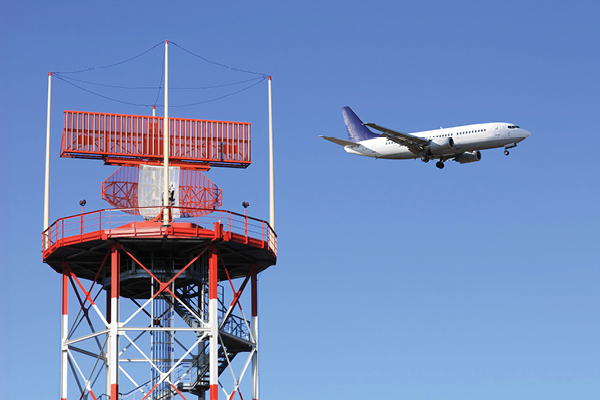Airspace Q1 2019 – Creating value through benchmarking
Converting industry data into easily understandable metrics will help ANSPs manage traffic growth.

Air traffic management (ATM) is awash with data, every flight adding new information to an already enormous database. Using timely analytics to tease details and trends from that data is vital to improving the safety and efficiency of the industry.
A key part of this process is benchmarking. Measuring company performance against the best achievements within the industry or in another industry can help identify gaps, leading to properly informed decisions and fostering progress. As one company advances so the benchmarking standards are set higher and the industry – and its customers – benefit.
The CANSO Global Air Navigation Services Performance Report 2018 is an important tool in this regard, helping to push the ANSP performance bar higher. It does not seek to compare the results of various ANSPs but rather highlights global performance trends and so acts as a basis for collective improvement.
“The report is a CANSO initiative which provides an annual global picture of ATM performance, comparing key cost-efficiency and productivity indicators and highlighting global trends,” explains Jeff Poole, CANSO’s Director General.
“It provides ANSPs with a means to measure and benchmark their operations, and drives real dialogue on topics and trends related to performance and improving ATM efficiency in the future.”
Cost rises
A number of important trends have been identified in the CANSO Global Air Navigation Services Performance Report 2018.
Costs are on the rise in several areas. In 2017, a majority of ANSPs (56%) saw an increase in their continental (flights over land) airspace cost per information flight region (IFR) flight hour, contrasting with 2016, when most ANSPs (52%) experienced a decrease. The cost per IFR flight hour for oceanic air navigation services (ANS) followed a similar path with 60% of ANSPs subjected to rising costs, compared with only 25% in 2016.
Traffic growth seems to be the main reason for these cost increases. As the report explains: “Unlike many industries where greater volume means lower unit costs, providing additional capacity in ATM can often be more complex and challenging than for the existing capacity, hence higher unit costs for that additional capacity.”
Other costs – excluding air traffic controller (ATCO) costs – are also on an upward trend. The report reveals 59% of ANSPs saw increases in their other continental ANS costs, while all ANSPs reporting other oceanic ANS costs saw these costs rise.
Again, traffic growth may be the underlying cause. ANSPs have been forced to invest to provide sufficient capacity, which may explain the rise in ANS costs and the reduction in overall cost efficiency.
ATCO productivity
The positive news is that ATCO cost increases are slowing down. Employment costs are subject to various factors, including regulation and the performance of the local economy, and are therefore difficult to compare across borders. It is possible, however, to track trends in annual growth rates and look at these values in terms of purchasing power parity (PPP).
Employment costs rose for most ANSPs in 2017. But while 73% of providers of continental ANS reported higher costs in 2017, this must be compared with 89% of ANSPs posting hikes the year before.
Furthermore, the magnitude of the cost rises is lessening. The report notes that “whereas 48% of ANSPs saw an increase in the [employment cost] metric of over 5% in 2015, in 2017 only 35% saw such a significant change.” In other words, the rise in employment costs is slowing down.
Coupled with this, ATCO productivity is surging. The ‘ATCOs in OPS hour productivity’ metric measures the performance of ATCOs. It is the number of IFR flight hours controlled for every hour that an ATCO is in operations.
Some 71% of ANSPs have seen continental productivity increases over the last year – with approximately 43% of these increases being greater than, or equal to, 4%. Because ATCO productivity is intrinsically linked to IFR hours, it means ANSPs effectively increased ATCO performance to meet the rises in IFR hours.
New technologies are likely to be the main ingredient in this transformation recipe. These often simplify processes and enhance operational efficiency. Airspace restructuring – another response to surging air traffic – would also have played a part. Such developments and their impact on human resources will increasingly influence productivity metrics in the future.
Service delivery
Comparing ‘Cost per IFR flight hour’ with ‘ATCOs in OPS hour productivity’ helps to determine the cost of service delivery. Specifically, it reveals whether changes in ATCO productivity have driven the changes in service delivery costs.
“The results demonstrate that, although CANSO ANSP Members have and are continuing to effectively drive improvements in global performance, there are signs that total costs are still rising alongside traffic levels,” the report notes.
Although, not surprisingly, the majority of ANSPs with lower productivity also had higher unit costs, the picture is a little murkier than might be expected. Many ANSPs saw both productivity and costs increase.
The report suggests the answer lies in investment in long-term service provision. Simply, improved ATCO productivity and the resulting boost to cost-efficiency were not enough to overcome the level of investment. Cost pressures could also be linked to training new ATCOs to help meet the current and future demands of increased traffic.
“This ninth edition of the CANSO Global Air Navigation Services Performance Report, covering performance data from 2013-2017, illustrates the challenges that face the ATM industry at present, from increased demand for air navigation services to rising service costs,” Poole notes. “It also demonstrates the truly remarkable job that ANSPs do in powering global aviation, enabling connectivity and delivering significant economic benefits.
“ANSPs are accommodating more activity than ever before, while successfully developing and implementing innovative solutions that are improving ATM performance and upholding the highest levels of safety,” he adds. “Providing a collaborative platform to help improve global ATM performance will remain a focus of both CANSO and its Members. It is by working together that ATM will meet the challenges inevitable in the years to come.”
The CANSO Global Air Navigation Services Performance Report 2018 can be downloaded from the CANSO website: www.canso.org/publications



